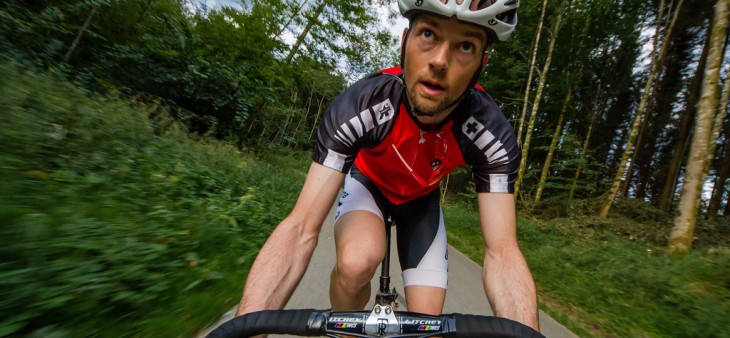
We’ve had a few cycling-related questions recently, no doubt inspired by this year’s exciting Tour de France. Cycling’s always been a popular sport here in the UK; with a great deal of beautiful countryside accessible by bike, cycling holidays continue to attract Brits all year round. So how can you make sure you’re doing your best to prevent any unfortunate injuries? In this month’s Ask The Physiotherapy Partners, we take a look at how cycling affects your body and the most effective ways to protect yourself.
Whether you’re out for a gentle ride in the Cotswolds or going hell for leather in the Peak District, it’s important to make sure you’re aware of the stresses and strains you’re putting on your muscles and joints. Let’s take a look at some of the main parts of the body that are frequently affected by cycling.
– Although cycling doesn’t put as much stress on the knees as running, riding a bike does require the knees to do a lot of work, and poor technique or position can lead to injuries. It’s often one of the most frequently raised issues by cyclists, and is often caused by issues with saddle height or position.
- Back pain is also commonly experienced by cyclists, and is again often due to poor cycling posture – the back should be arched like a bridge. Those who have pre-existing back problems may find that bumpy roads increase their pain.
- The Achilles tendons can cause pain for those guilty of ‘ankling’ whilst pedalling – drastically changing the angle of the foot during each pedal stroke. This was a popular technique in the past but is now known to cause injury and damage to the Achilles tendons. Pain in this area can also be as a result of poor bike set up.
- Hands can be affected by conditions such as ulnar neuritis (also known as handlebar palsy, cyclist palsy, or ulnar neuropathy), or carpal tunnel syndrome. Pins and needles in the hand can be symptomatic of both of these conditions, which can affect grip and cause pain.
How can I minimise the risk of injury when cycling?
As with all forms of exercise, it’s important to warm up and cool down properly. This gets your body ready for the increased amount of physical work and minimises the risk of injury overall.
However, there are some things that cyclists specifically can do; the main preventative measure being ensuring your cycling position is correct. It’s vital to remember that your bike should be set up specifically for your body, and not for your friend/relative – you are likely to be different heights and have different limb lengths, so make sure you think about the following when setting up your bike:
- Saddle height/position – make sure the seat is the right height for your leg length and isn’t too far back or forward.
- Crank arm length – shouldn’t be too long.
- Cleat rotation – if this is out, you’ll be subjecting your knees to increased rotational forces.
If you’re unsure of how to set up your bike properly, find a professional to do it for you – it’ll benefit you in the long run!
Overtraining can also be a cause of injury for cyclists, especially those that are new to the sport and initially push themselves too hard – enthusiasm is great, but make sure you take care of yourself!
Crashes and collisions are part and parcel of cycling at times – make sure you’re watching where you’re going and are aware of those around you! Look out for inexperienced members of your group and avoid cycling when conditions are hazardous.
Make sure you take a break if you’re feeling unexpected levels of pain, and either get your bike fit checked or see a physiotherapist. Feel free to get in touch with The Physiotherapy Partners to talk about cycling injury treatment and prevention.
If you’ve got a question for our team, just email it to us at ask@thephysiotherapypartners.co.uk.



